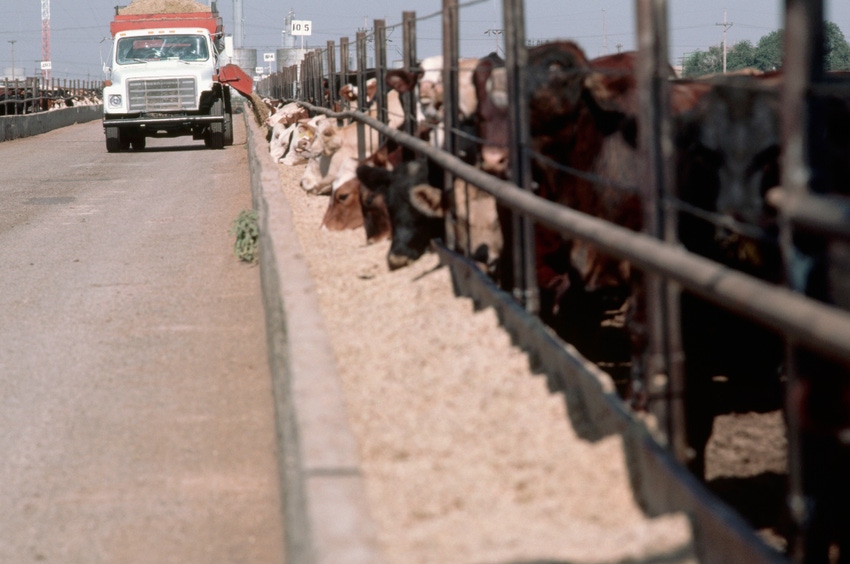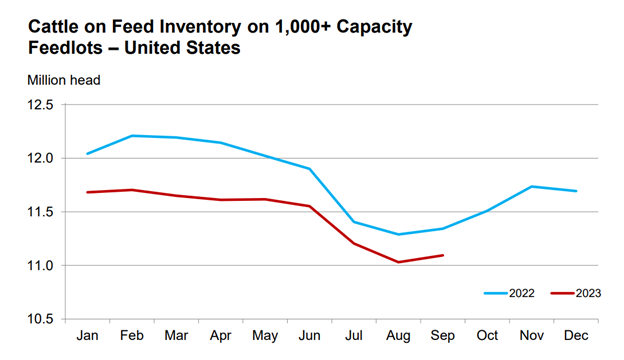No surprises in ‘Cattle on Feed’
Report continues narrative that supplies outside of feedlots are relatively tight.

There were no surprises in USDA’s latest “Cattle on Feed” report released Friday. USDA Livestock Analyst Mike McConnell said the numbers lined up pretty well with industry expectations.
Cattle and calves on feed for the slaughter market in the United States for feedlots with capacity of 1,000 or more head totaled 11.1 million head on September 1, 2023. The inventory was 2% below year-ago levels and in line with pre-report estimates.

USDA NASS
Placements in feedlots during August totaled 2.00 million head, 5% below 2022. Net placements were 1.95 million head. During August, placements of cattle and calves weighing less than 600 pounds were 420,000 head, 600-699 pounds were 305,000 head, 700-799 pounds were 455,000 head, 800-899 pounds were 488,000 head, 900-999 pounds were 245,000 head, and 1,000 pounds and greater were 90,000 head.
Marketings of fed cattle during August totaled 1.88 million head, 6% below 2022.
“Overall, the report continues the narrative that supplies outside of feedlots are relatively tight, and that’s really what we’re seeing in terms of increasing prices for feeder cattle as the number of placements and marketings are declining year over year,” McConnell said.
Derrell Peel, Oklahoma State University Extension livestock marketing specialist, said at some point in the coming months heifer retention will increase sharply. This will drop the number of heifers in feedlots and decrease heifer slaughter. He noted that July quarterly data showed that heifers currently make up 39.9% of feedlot inventories but said this will drop to about 32% when heifer retention begins. When this happens, Peel said average feedlot inventories will likely drop another 1.0 - 1.2 million head “at least in the next eight-18 months.”
Feedlot inventories will likely decline to a level close to the 2014 low and stay relatively low for many months, suggesting that cattle market will remain strong at least through the fall, he added.
About the Author(s)
You May Also Like




